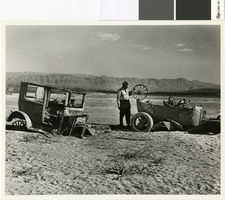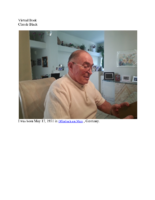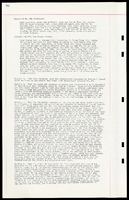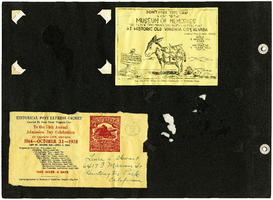Search the Special Collections and Archives Portal
Search Results
Ryan, Ora Prichard Smith, 1904-1992
Ora Belva Palmer was born on September 4, 1904 in Aurora, Missouri to Amanda Belle Vaughn and James Henry Palmer. She married Everett John Phelps on December 25, 1921. The couple had one daughter, Rosetta Belle Phelps. She later left Phelps and moved west to pursue a divorce. She moved to Las Vegas, Nevada in 1931. She worked as a waitress and married Louis A. Prichard on February 8, 1935 in St. George, Utah. In 1938, she began to work at the Shady Moor Lodge, a boarding house located at 325 South Second Street.
Person
Hirsch, Charles J., 1912-2002
Accountant Charles J. Hirsch was born in New York City, New York on November 8, 1912. After graduating from New York's Pace University in 1938, with a degree in Accounting and Business Administration, he traveled to Las Vegas, Nevada, where he was employed by the Apache Hotel on Fremont Street. His stay in Las Vegas was interrupted once by a five-year tour of duty with the Air Force Contract Audit Division, where he attained the rank of captain before his release in 1946.
Person
Lloyd, Harold, 1893-1971
Harold Lloyd was an influential film actor and producer known for his sight gags and extreme stunts in his silent comedy films between 1913 and 1928, as well as his sound films between 1929 and 1938 before his retirement. After retiring, director Preston Sturges convinced him to return to acting, appearing in the Howard Hughes-produced The Sin of Harold Diddlebock (1947).
The film was re-edited and re-released as Mad Wednesday in 1950.Person

Photograph of two cars abandoned by their owners in St. Thomas, Nevada, April 11, 1948
Date
Archival Collection
Description
Remains of two cars, most likely near the remains of Hugh Lord's shop, in St Thomas, Nevada, when the town emerged from the waters of Lake Mead in 1945
Transcribed Notes: Bureau of Reclamation typed notes appended to back of photo: Boulder Canyon Project--Nevada--Region 3 St. Thomas, Nevada, was founded by the Mormons in 1855. In its heyday there were about 800 residents in the village. The "Main Street" was a part of the old Arrowhead Trail, which led from Salt Lake City, Utah to Los Angeles, California. In June 1938 the town was abandoned by its residents, which at that time were few in number because of the rising waters of Lake Mead that submerged the townsite. Photograph shows a closeup of two cars abandoned by their owners. Note the wide wooden wheel on the car to the right; also, the smaller wheel with wooden spokes. The wide wooden wheel was used as an "engine" to pump water, the belt being placed on this wooden wheel.
Image

Biographical essay by Claude Black, 2014
Date
Archival Collection
Description
Claude Black describes his family's escape from Germany to Santiago, Chile, and eventually settling in Chicago, Illinois. The essay is illustrated with images of his family and documents from their journey.
Text

Biographical essay by Eva Peters, 2014
Date
Archival Collection
Description
Peters' essay describes her family's journey to escape the Nazis and Communism, remaining in Hungary until 1956. She and her husband were part of the Hungarian Freedom Fighters group, and escaped to Vienna, and then to the U.S.
Text



